
RubberSideDown
-
Posts
1,943 -
Joined
-
Last visited
Content Type
Events
Forums
Downloads
Quizzes
Gallery
Blogs
Posts posted by RubberSideDown
-
-
^
Obviously books are only an addendum to real-world experience- 'expecting the unexpected' is the rule everywhere when you're on two wheels- Thailand (SE Asia, really) definitely is a particularly hazardous environment, but I would say proper skills are of paramount importance to a rider- you can always adapt to your environment- a bad rider will only have a worse go of it over here. Certainly knowledge of the local roads and riders is important as well, but I think that's secondary to your basic skill-set.
-
I don't think I can post a link to the TOTW II video without it being deleted, but it's easy to find.
-
Track days are fantastic for technique, but what you learn doesn't always translate to the street (no two-way traffic being a major difference)- you have to ride more defensively on the road.
Hopefully everyone has read 'The Pace' by Nick Ienatsch, which is the best single article I've ever read regarding treating the street in its proper context
THE PACE
Racing involves speed, concentration and commitment; the results of a mistake are usually catastrophic because there's little room for error riding at 100 percent. Performance street riding is less intense and further from the absolute limit, but because circumstances are less controlled, mistakes and over aggressiveness can be equally catastrophic. Plenty of roadracers have sworn off street riding. "Too dangerous, too many variables and too easy to get carried away with too much speed," track specialists claim. Adrenaline-addled racers find themselves treating the street like the track, and not surprisingly, they get burned by the police, the laws of physics and the cold, harsh realities of an environment not groomed for ten-tenths riding. But as many of us know, a swift ride down a favorite road may be the finest way to spend a few free hours with a bike we love. And these few hours are best enjoyed riding at The Pace.
A year after I joined Motorcyclist staff in 1984, Mitch Boehm was hired. Six months later, The Pace came into being, and we perfected it during the next few months of road testing and weekend fun rides. Now The Pace is part of my life - and a part of the Sunday morning riding group I frequent. The Pace is a street riding technique that not only keeps street riders alive, but thoroughly entertained as well.
THE PACE
The Pace focuses on bike control and de-emphasizes outright speed. Full-throttle acceleration and last minute braking aren't part of the program, effectively eliminating the two most common single-bike accident scenarios in sport riding. Cornering momentum is the name of the game, stressing strong, forceful inputs at the handlebar to place the bike correctly at the entrance of the turn and get it flicked in with little wasted time and distance. Since the throttle wasn't slammed open at the exit of the last corner, the next corner doesn't require much, if any, braking. It isn't uncommon to ride with our group and not see a brake light flash all morning.
If the brakes are required, the front lever gets squeezed smoothly, quickly and with a good deal of force to set entrance speed in minimum time. Running in on the brakes is tantamount to running off the road, a confession that you're pushing too hard and not getting your entrance speed set early enough because you stayed on the gas too long. Running The Pace decreases your reliance on the throttle and brakes, the two easiest controls to abuse, and hones your ability to judge cornering speed, which is the most thrilling aspect of performance street riding.
YOUR LANE IS YOUR LIMIT
Crossing the centerline at any time except during a passing maneuver is intolerable, another sign that you're pushing too hard to keep up. Even when you have a clean line of sight through a left-hand kink, stay to the right of the centerline. Staying on the right side of the centerline is much more challenging than simply straightening every slight corner, and when the whole group is committed to this intelligent practice, the temptation to cheat is eliminated through peer pressure and logic. Though street riding shouldn't be described in racing terms, you can think of your lane as the race track. Leaving your lane is tantamount to a crash.
Exact bike control has you using every inch of your lane if the circumstances permit it. In corners with a clear line of sight and no oncoming traffic, enter at the far outside of the corner, turn the bike relatively late in the corner to get a late apex at the far inside of your lane and accelerate out, just brushing the far outside of your lane as your bike stands up. Steer your bike forcefully but smoothly to minimize the transition time. Don't hammer it down because the chassis will bobble slightly as it settles, possibly carrying you off line. Since you haven't charged in on the brakes, you can get the throttle on early, before the apex, which balances and settles your bike for the drive out.
More often than not, circumstances do not permit the full use of your lane from yellow line to white line and back again. Blind corners, oncoming traffic and gravel on the road are a few criteria that dictate a more conservative approach, so leave yourself a three or four foot margin for error, especially at the left side of the lane where errant oncoming traffic could prove fatal. Simply narrow your entrance on a blind right-harder and move your apex into your lane three feet on blind left turns in order to stay free of unseen oncoming traffic hogging the centerline. Because you're running at The Pace and not flat out, your controlled entrances offer additional time to deal with unexpected gravel or other debris in your lane; the outside wheel track is usually the cleanest through a dirty corner since a car weights its outside tires most, scrubbing more dirt off the pavement in the process, so aim for that line.
A GOOD LEADER, WILLING FOLLOWERS
The street is not a racing environment, and it takes humility, self assurance and self control to keep it that way. The leader sets the pace and monitors his mirrors for signs of raggedness in the ranks that follow, such as tucking in on straights, crossing over the yellow line and hanging off the motorcycle in the corners, If the leader pulls away, he simply slows his straight way speed slightly but continues to enjoy the corners, thus closing the ranks but missing none of the fun. The small group of three or four riders I ride with is so harmonious that the pace is identical no matter who's leading. The lead shifts occasionally with a quick hand sign, but there's never a pass for the lead with an ego on the sleeve. Make no mistake, the riding is spirited and quick in the corners. Anyone with a right arm can hammer down the straights; it's proficiency in the corners that makes The Pace come alive.
Following distances are relatively lengthy, with the straightaways taken at more moderate speeds, providing the perfect opportunity to adjust the gaps. Keeping a good distance serves several purposes, besides being safer. Rock chips are minimized, and the police or highway patrol won't suspect a race is in progress. The Pace's style of not hanging off in corners also reduces the appearance of pushing too hard and adds a degree of maturity and sensibility in the eyes of the public and the law. There's a definite challenge to cornering quickly while sitting sedately on your bike.
New rider indoctrination takes some time because The Pace develops very high cornering speeds and newcomers want to hammer the throttle on the exits to make up for what they lose at the entrances. Our group slows drastically when a new rider joins the ranks because our technique of moderate straightaway speed and no brakes can suck the unaware into a corner too fast, creating the most common single bike accident. With a new rider learning The Pace behind you, tap your brake lightly well before the turn to alert him and make sure he understands there's no pressure to stay with the group.
There's plenty of ongoing communication during The Pace. A foot off the peg indicates debris in the road, and all slowing or turning intentions are signaled in advance with the left hand and arm. Turn signals are used for direction changes and passing, with a wave of the left hand to thank the cars that move right and make it easy for motorcyclists to get past. Since you don't have a death grip on the handlebar, your left hand is also free to wave to oncoming riders, a fading courtesy that we'd like to see return. If you're getting the idea The Pace is a relaxing, noncompetitive way to ride with a group, you are right.
RELAX AND FLICK IT
I'd rather spend a Sunday in the mountains riding at The Pace than a Sunday at the racetrack, it's that enjoyable. Countersteering is the name of the game; smooth, forceful steering input at the handlebar relayed to the tires' contact patches through a rigid sport bike frame. Riding at The Pace is certainly what bike manufacturers had in mind when sport bikes evolved to the street.
But the machine isn't the most important aspect of running The Pace because you can do it on anything capable of getting through a corner. Attitude is The Pace's most important aspect: realizing the friend ahead of you isn't a competitor, respecting his right to lead the group occasionally and giving him credit for his riding skills. You must have the maturity to limit your straightaway speeds to allow the group to stay in touch and the sense to realize that racetrack tactics such as late braking and full throttle runs to redline will alienate the public and police and possibly introduce you to the unforgiving laws of gravity. When the group arrives at the destination after running The Pace, no one feels outgunned or is left with the feeling he must prove himself on the return run. If you've got some thing to prove, get on a racetrack.
The racetrack measures your speed with a stop watch and direct competition, welcoming your aggression and gritty resolve to be the best. Performance street riding's only yardstick is the amount of enjoyment gained, not lap times, finishing position or competitors beaten. The differences are huge but not always remembered by riders who haven't discovered The Pace's cornering pureness and group involvement. Hammer on the racetrack. Pace yourself on the street.-MC
Read more: http://www.motorcyclistonline.com/flashback/122_0911_the_pace_nick_ienatsch/#ixzz2RxF20u9W
-
I've read good reviews of Hough's books- I'm sure they're worth checking out.
-
My answer is definitely 'yes'.
It's necessary to understand theory, technique, and physics to be a good rider, and many things are difficult to figure out on your own- I've had more than a few 'light bulb moments' from books, and I improved by putting what I learned into practice.
These are my four favorites (the two by Keith Code are absolutely essential reading for any rider, IMHO)- if anyone has any other suggestions or recommendations, please post them (there's also an excellent companion video to 'A Twist of the Wrist II' available online):
-
 2
2
-
-
I just ordered a full set of Spiegler ABS braided-steel brake lines from the States- $230 with a lifetime warranty, and they will drop 1.65 pounds from the stock set.
-
Went and looked at it again today- ugliest stock exhaust ever:
I'd have to agree, ugly as... Kind of like an enlarged version of the cbr250 joint, but to make it worse there's one on both sides!! The rest of the bike looks great IMO, it really looks like what it is i.e. an incredibly fast bike for getting places extremely quickly with a massive smile on your face and in relative comfort.
FWIW in terms of looks I like the carbon Graves slipons, I don't really like the motogp style exhaust on this type of bike I think it looks a bit out of place.
Congrats on the purchase...
Thanks- I'm really looking forward to getting it- i stopped by the shop yesterday and they said another month or so.
While the smaller exhaust was kind of growing on me, as I mentioned it won't work with my rearsets, so I'm getting the more conventional exhaust in post #28- it's very similar in style and only weigh 0.75lb more with the same power output, and it gives enough clearance (it's also quieter without having to use sound baffles).
-
It seems that it's actually higher due to the fact the filtration element has more surface area (as I mentioned earlier, on sites where filters are dissected, the K&N is shown to have more pleats in the filter section, allowing for more flow).
-
cant remember where i read it and not saying its a fact but when researching the internet i came across it somewhere,why are they not as good i dont know but richards post above states the k&n restrict the oil flow more,maybe thats the reason cant see why you want to restrict the oil flow more than the manufacturer recomends,jmoK&N oil filters are nowhere near as good as OEM and I wouldn't let them near any of my vehicles.
yep i have heard this mentioned before with oil filters and tend to agree with it.
Sent from my GT-P7500 using Thaivisa Connect Thailand mobile app
Would like to hear how the K&N oil filters are less than the OEM?
Performance of an oil filter is normally measured by the smallest particle size it filters out and the rate of resisting the oil flow at engine operating temperature. So far as the oil filters I use from K&N they outperform the OEM oil filters by resisting the oil flow much less than the OEM and stop much smaller particles in the oil than the OEM filter...
Sent from my GT-P7500 using Thaivisa Connect Thailand mobile app
You misread his post- he said it restricts the oil flow much less than the OEM filter.
-
OEM filters are made to meet Kawasaki's minimum required specs and are supplied by the lowest bidder- if they were the 'best' then there would be no market for other brands (especially as the filters are usually more expensive in the aftermarket).
As I mentioned, the nut on the K&N filter is a real selling point for me, but if there's actual evidence of them being inferior to OEM filters I'd like to see it.
-
yep i have heard this mentioned before with oil filters and tend to agree with it.K&N oil filters are nowhere near as good as OEM and I wouldn't let them near any of my vehicles.
Sent from my GT-P7500 using Thaivisa Connect Thailand mobile app
Heard it where, and based on what?
I'm not a K&N rep and would happily use another filter, but- having poked around on the net looking at reviews- I can't really find anything that backs up your opinion.
The only interesting thing I saw was a site showing hacked up filters, and the K&N seemed to have the most pleats (meaning largest surface area) in its filtration section.
I'm sure there are other good filters, but what makes K&N 'bad'?
Here's a review from a supposedly expert mechanic who recommends the K&N bike filters:
http://www.ehow.com/video_5537463_reviewing-motorcycle-engine-oil-filters.html
-
that can is truly ridiculous
It's much worse in person, almost like it was Photoshopped or done as a joke.

New cans are the first mod most owners make.
It's a nice-looking (though by no means beautiful) bike otherwise.
-
Yeah, I would agree with that- checking out feedback is a good way to weed them out (and, as you said, if the price seems too good to be true...)
-
-
I got my filters from the UK from a place with tens of thousands of positive feedback ratings off eBay- I think they were legit;)
-
K&N oil filters are nowhere near as good as OEM and I wouldn't let them near any of my vehicles.
Really? Backed up by what evidence besides your opinion? OEM filters tend not to be of the highest quality- that's why aftermarket filters exist in tne first place.
I'd say they are as good or better than anything else available, and they're more convenient to use.
-
Correct- there's a coating between two lens sections- it's more effective than any plastic lens alone, though, so glass must improve the effect- while it's a bit heavier and can shatter if dropped, I've been using it for years and haven't found a better plastic lens (or a better lens of any kind)- if one is developed I would switch (provided it's at a comparable price-point).
Then they are polarized
Yet my Costa Del Mar glass lenses block nearly 50% more harmful light than Oakley plastic lenses- while that could very well be due to a polymer coating, they're still better than plastic alone.
Its the other way around, plastic block UV but glass typically doesntRight, they are both cars- so plastic blocks UV- it just doesn't do it with the efficacy of glass.
-
Its the other way around, plastic block UV but glass typically doesntRight, they are both cars- so plastic blocks UV- it just doesn't do it with the efficacy of glass.
Yet my Costa Del Mar glass lenses block nearly 50% more harmful light than Oakley plastic lenses- while that could very well be due to a polymer coating, they're still better than plastic alone.
-
Right, they are both cars- so plastic blocks UV- it just doesn't do it with the efficacy of glass.
-
Isn't polycarbonate a form of plastic?
-
 1
1
-
-
-
Hmmm... for 200 baht that would be a good deal- I'd miss that nut, though- I've got a friend coming in from the Staes soon- maybe I'll make him bring me some of the K&N filters, which will be cheaper there (and I've heard they make a longer one that will fit my bike, which means a bigger filtration portion, but I can't find the number).
Thanks for taking the pic.
-
I will check but thougt/assumed they were oem
I've been here too long to assume a shop is doing the right thing...

Also please let me know if they have the nut on top or if an oil filter wrench has to be used- being able to use a socket and torque wrench makes the job so much easier.
-
Lens color is also a consideration- I prefer grey or amber, but green or blue are also good choices for the unrelenting sun of Thailand.

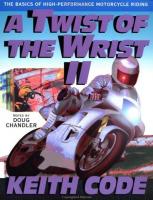
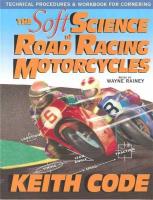
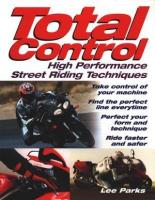
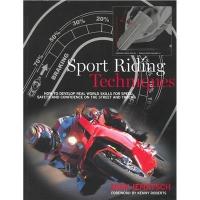
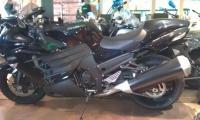
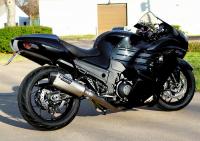
Can A Book Make You A Better Rider?
in Motorcycles in Thailand
Posted
^
A couple million miles? Wow- that's over 100 miles per day everyday for 54 years- quite a bit of saddle time there.
Again, being a good rider means having excellent skills- knowing the local conditions and picking your spots is also a major part- a rider with great road sense will do fine in Thailand or anywhere else- it's all about awareness and practice.
Look at how poorly the locals generally ride, and how often they end up getting hurt or killed due to rider error- their knowledge of the roads here doesn't mean much combined with their lack of skill- on the other hand, I've had friends who are great riders by any definition short of SBK or MotoGP come here and pick things up fairly quickly as far as local rules go- skill trumps simple knowledge of conditions IMHO- the biggest hazard here (or anywhere) is rider error, not road conditions (though of course I concede road conditions must be taken into account).